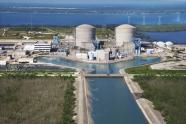Nuclear Expansion will get Delayed

In the wake of Japan’s earthquake and tsunami, thought leaders here in the United States are largely united that nuclear energy will undergo serious reviews and potential changes, which will cause delays.
Testifying before the Senate Appropriations Committee’s Energy and Water Development Subcommittee, utilities along with regulators and scientists all concurred that nuclear energy has proven to safe and reliable here for three decades. But if current plants are to be relicensed and if new ones are to get built, construction designs and operational processes must be modified.
“U.S. nuclear power plants are safe. Still, we cannot be complacent about the accident at Fukushima,” says William Levis, president and chief operating officer at PSEG Power, which operates three reactors in New Jersey and is part owner of two others in Pennsylvania. “We know we operate in an environment where the penalties for mistakes are high and where credibility and public confidence, once lost, are difficult to recover.”
Testifying on behalf of the Nuclear Energy Institute, Levis says that the industry has invested about $6.5 billion in recent years so as to upgrade the 104 nuclear plants now operating in the United States. That is, it has replaced steam generators and reactor vessel heads. He furthermore emphasizes that the cumulative effect of such investment over 30 years serves to mitigate the changes for the type of accident that has occurred in Japan.
Japan’s Fukushima Daiichi nuclear plant withstood the massive earthquake that hit. But it was the subsequent tsunami and those huge waves that knocked out all the generators on site. Therefore, the spent irradiated fuel could not be properly cooled and the concern is the extent to which such radiation has escaped.
Once the main source of electrical power to the plant is shut down, the backup generators are supposed to kick in. The diversity and redundancy of the emergency cooling systems provide a high level of certainty but it is not absolutely guaranteed to cool the irradiated fuel, says David Lochbaum, director of Nuclear Safety for the Union of Concerned Scientists, before Congress. Even if it fails, he adds that the reactor is encased in a three-foot concrete containment building.
Storage is Hot Issue
After the fuel is used, it is stored in a pool. After it is sufficiently cooled, it is then moved to storage. In this country that takes place on site in above-ground steel and concrete encased dry cask units. If there a connection between what happened in Japan and what could occur here, it is the storage of that radioactive material before it goes into long-term, on site storage.
“The irrefutable bottom line is that we have utterly failed to properly manage the risk from irradiated fuel stored at our nation’s nuclear plants,” says Lochbaum. An immediate step could be the acceleration of the transfer of used fuel from the pools where it is immediately placed to the dry cask storage where it kept on site. One question that U.S. policymakers will need to revisit is whether this country ought to have a permanent, centralized off-site repository.
U.S. nuclear regulators are actively engaged with Japanese officials so as to help them while also learning from their experience. To that end, the Nuclear Regulatory Commission continually forces plant operators here to make revisions to their designs. As a result of September 11, 2001, for example, it required plants to develop new procedures to deal with severe situations.
While the ultimate fate of nuclear power is uncertain, some outcomes are good bet, says Ernest Moniz, director of MIT’s Energy Initiative. The cost of doing business at nuclear reactors will rise, reflecting new requirements for on-site spent fuel management. Meantime, he expects that the relicensing of 40-year-old nuclear plants for another 20 years will face added scrutiny and create delays. Even the 60 plants that have already won relicensing approval could get revisited.
“On the positive side, nuclear power plants have low operating and fuel costs compared with coal and natural gas plants, and the owners might be able to absorb reasonable costs,” Monitz testified. “However, the business decisions would be on a plant-by-plant basis depending on the design basis threat assigned to the plant’s specific circumstances. In many cases, perhaps most, the design basis threats are likely to be deemed sufficiently conservative and remain unchanged.”
After the Japanese situation is thoroughly assessed, U.S. regulators will take that information and apply it here. In the end, the current nuclear fleet with likely get relicensed after the appropriate changes are made but any expansion will be delayed because of financial and safety concerns.
Copyright © 1996-2010 by CyberTech, Inc. All rights reserved.
To subscribe or visit go to: http://www.energycentral.com
To subscribe or visit go to: http://www.energybiz.com